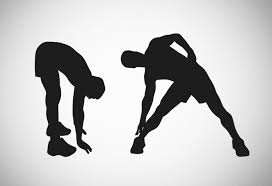
 Refers to a form of physical exercise in which a specific muscle or tendon (or muscle group) is deliberately flexed or stretched in order to improve the muscle’s felt elasticity and achieve comfortable muscle tone.
Refers to a form of physical exercise in which a specific muscle or tendon (or muscle group) is deliberately flexed or stretched in order to improve the muscle’s felt elasticity and achieve comfortable muscle tone.
Results in a feeling of increased muscle control, flexibility, and range of motion.
Used therapeutically to alleviate cramps.
Basically a natural and instinctive activity.
It can be accompanied by yawning.
Often occurs instinctively after waking from sleep, after long periods of inactivity, or after exiting confined spaces and areas.
Increases flexibility and is common for athletes to stretch before and after exercise in an attempt to reduce risk of injury and increase performance.
Stretching techniques may be ineffective or detrimental, even to the point of causing tears, hypermobility, instability, or permanent damage to the tendons, ligaments, and muscle fiber.
Although stretching is part of some warm up routines, it may weaken muscles in that situation.
It is normally impossible to stretch most muscle groups to their fullest length without training due to the activation of muscle antagonists as the muscle reaches the limit of its normal range of motion.
Assisted stretching may be performed when one is unable to stretch optimally unassisted.
There are four different types of stretching: ballistic, dynamic, SMF- self-myofascial release stretching, PNF-proprioceptive neuromuscular facilitation, and static stretching.
Ballistic stretching is a rapid bouncing stretch in which a body part is moving with momentum that stretches the muscles to a maximum.
With ballistic stretching muscles respond by contracting to protect itself from over extending.
Dynamic stretching is a walking or movement stretch.
By performing slow controlled movements through full range of motion, a person reduces risk of injury.
Proprioceptive neuromuscular facilitation (PNF) is a type of stretch for a particular muscle.
Proprioceptive neuromuscular facilitation has a specific job, so that resistance is applied, and then relaxed.
Static stretching is a type of stretch whereby a person stretches the muscle until a gentle tension is felt and then holds the stretch for thirty seconds or until a muscle release is felt, without any movement or bouncing.
Has no meaningful benefit in preventing muscle soreness.
Stretching does not appear to reduce the risk of injury during exercise, except perhaps for runners.
There is some evidence that pre-exercise stretching may increase athletes’ range of movement.
Females are generally more flexible than males.
